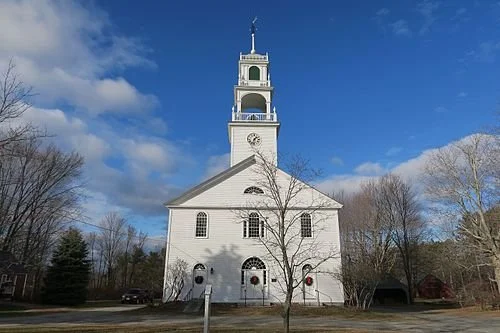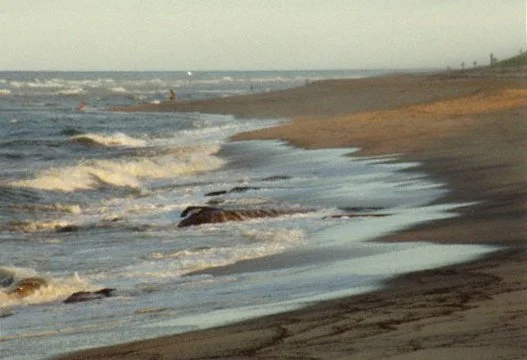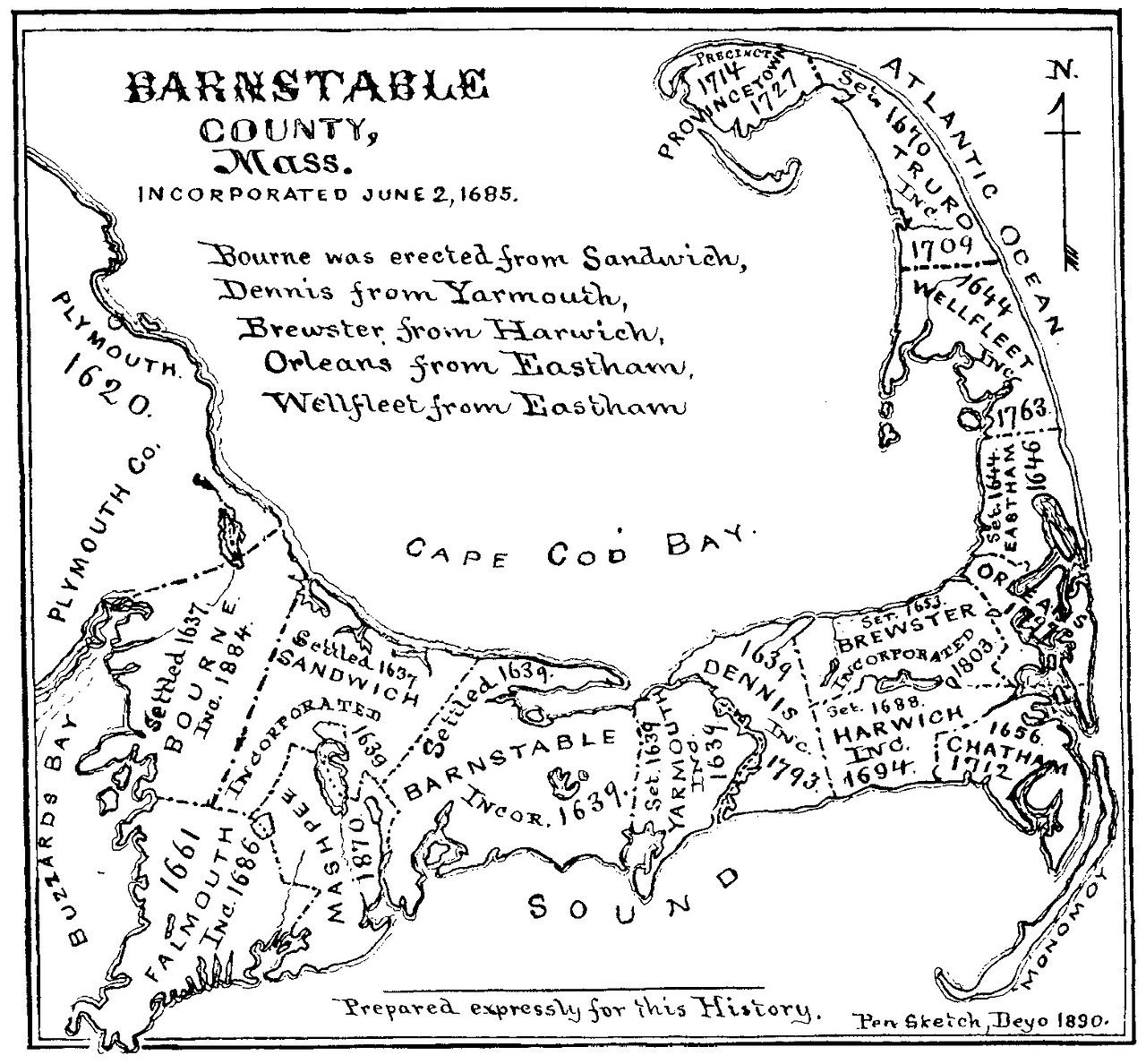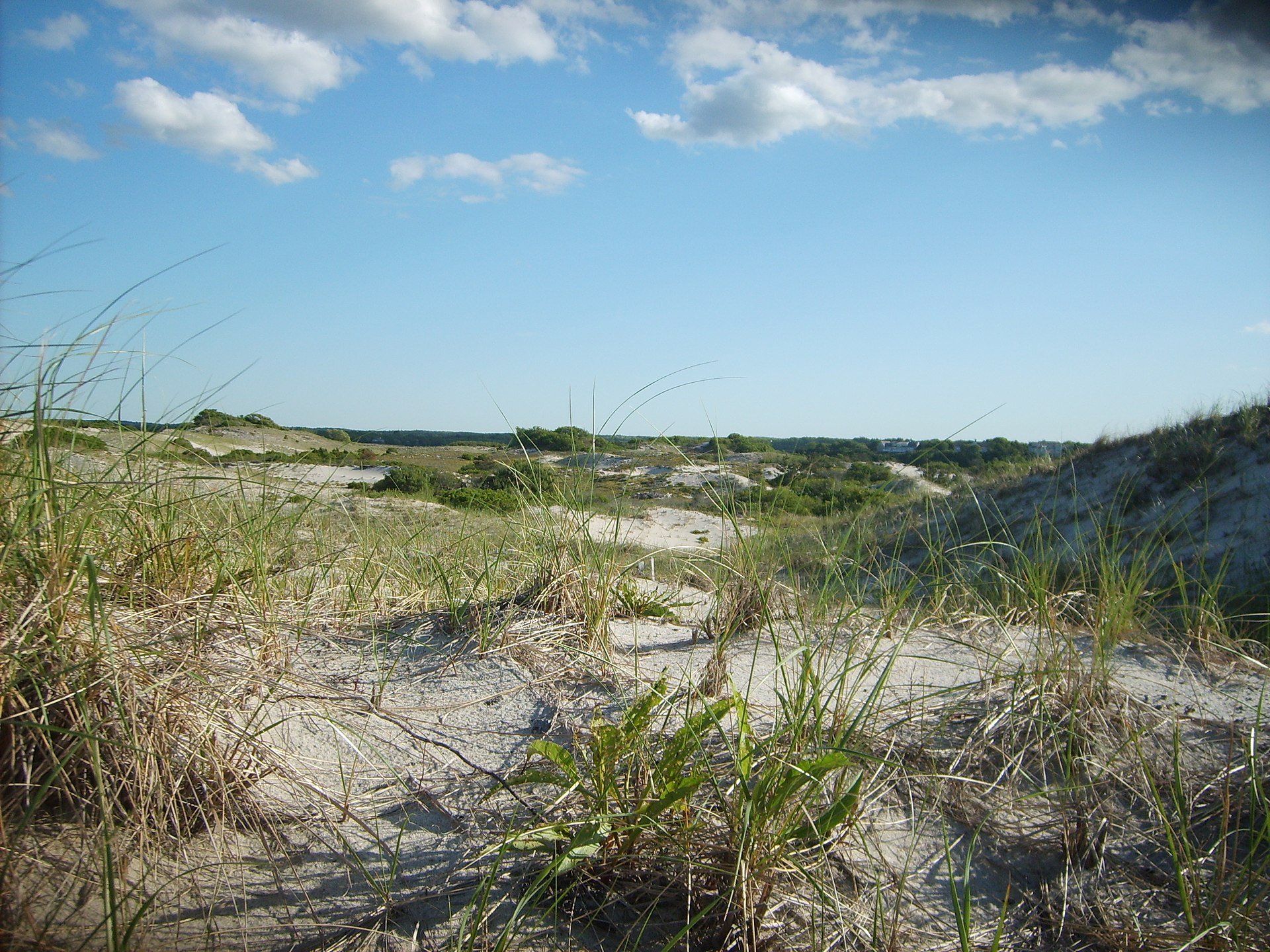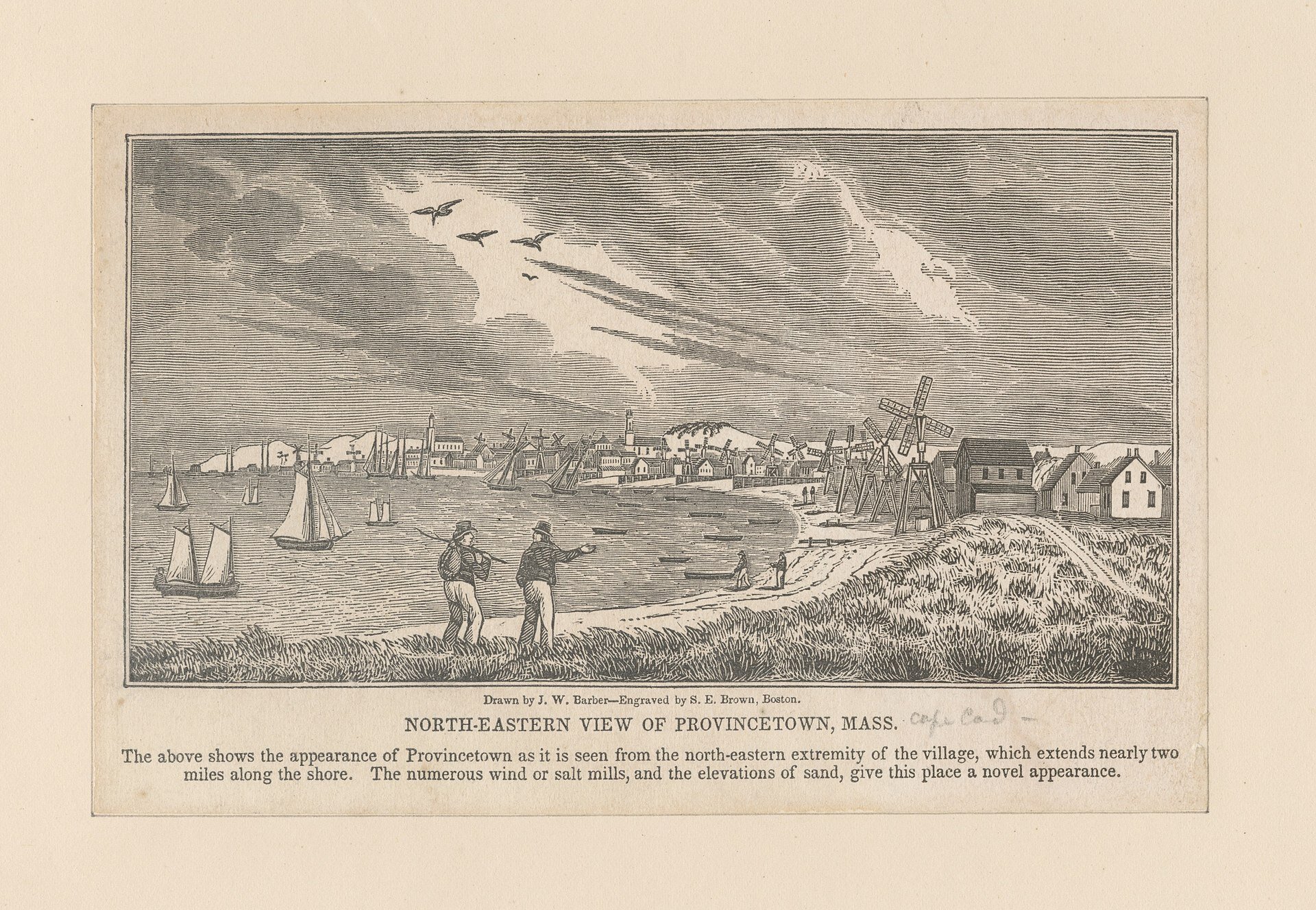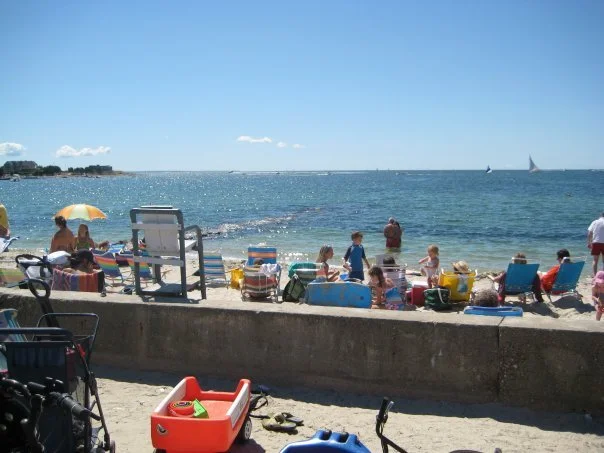
‘Deforming the landscape’
Webster, N.H., Congregational Church
“I was once reproved by a minister who was driving a poor beast to some meeting-house horse-sheds among the hills of New Hampshire, because I was bending my steps to a mountain-top on the Sabbath, instead of a church, when I would have gone farther than he to hear a true word spoken on that or any day. He declared that I was 'breaking the Lord's fourth commandment,' and proceeded to enumerate, in a sepulchral tone, the disasters which had befallen him whenever he had done any ordinary work on the Sabbath. He really thought that a god was on the watch to trip up those men who followed any secular work on this day, and did not see that it was the evil conscience of the workers that did it. The country is full of this superstition, so that when one enters a village, the church, not only really but from association, is the ugliest looking building in it, because it is the one in which human nature stoops the lowest and is most disgraced. Certainly, such temples as these shall erelong cease to deform the landscape. There are few things more disheartening and disgusting than when you are walking the streets of a strange village on the Sabbath, to hear a preacher shouting like a boatswain in a gale of wind, and thus harshly profaning the quiet atmosphere of the day.”
― Henry David Thoreau (1817-1862), in A Week on the Concord and Merrimack Rivers
‘Winter is lurking’
The Blackstone River Bikeway in Rhode Island
— Photo by Srs5694
— Photo by eflon
Sometimes a mortal feels in himself Nature
-- not his Father but his Mother stirs
within him, and he becomes immortal with her
immortality. From time to time she claims
kindredship with us, and some globule
from her veins steals up into our own.
I am the autumnal sun,
With autumn gales my race is run;
When will the hazel put forth its flowers,
Or the grape ripen under my bowers?
When will the harvest or the hunter's moon
Turn my midnight into mid-noon?
I am all sere and yellow,
And to my core mellow.
The mast is dropping within my woods,
The winter is lurking within my moods,
And the rustling of the withered leaf
Is the constant music of my grief...
“I Am the Autumnal Sun,’’ by Henry David Thoreau (1817-1862), of Concord, Mass., essayist, poet, naturalist and practical philosopher
Visit in a storm
At the Cape Cod National Seashore.
“What are springs and waterfalls? Here is the spring of springs, the waterfall of waterfalls. A storm in the fall or winter is the time to visit it; a light-house or a fisherman's hut the true hotel. A man may stand there and put all America behind him.’’
— Henry David Thoreau (1817-1862), in Cape Cod
Provincetown in Thoreau’s lifetime.
Before the deluge
“The time must come when this coast (Cape Cod) will be a place of resort for those New-Englanders who really wish to visit the sea-side. At present it is wholly unknown to the fashionable world, and probably it will never be agreeable to them. If it is merely a ten-pin alley, or a circular railway, or an ocean of mint-julep, that the visitor is in search of, — if he thinks more of the wine than the brine, as I suspect some do at Newport — I trust that for a long time he will be disappointed here. But this shore will never be more attractive than it is now.”
— Henry David Thoreau (1817-1862), in Cape Cod (published in 1865)
The dunes on Sandy Neck, in the town of Barnstable.
— Photo by Mr Senseless
‘The more barrels, the more Boston’
Boston Harbor and East Boston from State Street Block in mid-19th Century
— Photo by John P. Soule
"Boston, New York, Philadelphia, Charleston, New Orleans, and the rest, are the names of wharves projecting into the sea (surrounded by the shops and dwellings of the merchants), good places to take in and to discharge a cargo (to land the products of other climes and load the exports of our own). I see a great many barrels and fig-drums, piles of wood for umbrella-sticks, blocks of granite and ice, great heaps of goods, and the means of packing and conveying them, much wrapping-paper and twine, many crates and hogsheads and trucks, and that is Boston. The more barrels, the more Boston. The museums and scientific societies and libraries are accidental. They gather around the sands to save carting."
— Henry David Thoreau (1817-1862)
Before the summer folks
Provincetown, at the tip of Cape Cod, in the years when Thoreau walked the peninsula— 1849, 1850 and 1855.
“The time must come when this coast (Cape Cod) will be a place of resort for those New-Englanders who really wish to visit the sea-side. At present it is wholly unknown to the fashionable world, and probably it will never be agreeable to them. If it is merely a ten-pin alley, or a circular railway, or an ocean of mint-julep, that the visitor is in search of, — if he thinks more of the wine than the brine, as I suspect some do at Newport, — I trust that for a long time he will be disappointed here. But this shore will never be more attractive than it is now.”
Henry David Thoreau (1817-1862) in Cape Cod, first published in 1865, soon before railroads started to make The Cape a major summer-resort area.
At New Silver Beach, in Falmouth, on the western side of The Cape — probably not quite what Thoreau could have foreseen.
'In the horizon of my mind'
Packed in my mind lie all the clothes
Which outward nature wears,
And in its fashion's hourly change
It all things else repairs.
In vain I look for change abroad,
And can no difference find,
Till some new ray of peace uncalled
Illumes my inmost mind.
What is it gilds the trees and clouds,
And paints the heavens so gay,
But yonder fast-abiding light
With its unchanging ray?
Lo, when the sun streams through the wood,
Upon a winter's morn,
Where'er his silent beams intrude
The murky night is gone.
How could the patient pine have known
The morning breeze would come,
Or humble flowers anticipate
The insect's noonday hum,—
Till the new light with morning cheer
From far streamed through the aisles,
And nimbly told the forest trees
For many stretching miles?
I've heard within my inmost soul
Such cheerful morning news,
In the horizon of my mind
Have seen such orient hues,
As in the twilight of the dawn,
When the first birds awake,
Are heard within some silent wood,
Where they the small twigs break,
Or in the eastern skies are seen,
Before the sun appears,
The harbingers of summer heats
Which from afar he bears.
— “The Inward Morning,’’ by Henry David Thoreau (1817-1862)
‘Upon a winter’s morn’
Packed in my mind lie all the clothes
Which outward nature wears,
And in its fashion's hourly change
It all things else repairs.
In vain I look for change abroad,
And can no difference find,
Till some new ray of peace uncalled
Illumes my inmost mind.
What is it gilds the trees and clouds,
And paints the heavens so gay,
But yonder fast-abiding light
With its unchanging ray?
Lo, when the sun streams through the wood,
Upon a winter's morn,
Where'er his silent beams intrude
The murky night is gone.
How could the patient pine have known
The morning breeze would come,
Or humble flowers anticipate
The insect's noonday hum,—
Till the new light with morning cheer
From far streamed through the aisles,
And nimbly told the forest trees
For many stretching miles?
I've heard within my inmost soul
Such cheerful morning news,
In the horizon of my mind
Have seen such orient hues,
As in the twilight of the dawn,
When the first birds awake,
Are heard within some silent wood,
Where they the small twigs break,
Or in the eastern skies are seen,
Before the sun appears,
The harbingers of summer heats
Which from afar he bears.
“The Inward Morning,’’ by Henry David Thoreau (1817-1862), of Concord, Mass.
Replica of Thoreau’s cabin at Walden Pond, with statue of the writer
The future summer resort
By 1890, the extension of frequent rail service to the Cape was turning the peninsula into a famous place to go in the summer. Many of the natives were ambivalent about this development.
“The time must come when this coast (Cape Cod) will be a place of resort for those New-Englanders who really wish to visit the sea-side. At present it is wholly unknown to the fashionable world, and probably it will never be agreeable to them. If it is merely a ten-pin alley, or a circular railway, or an ocean of mint-julep, that the visitor is in search of, — if he thinks more of the wine than the brine, as I suspect some do at Newport, — I trust that for a long time he will be disappointed here. But this shore will never be more attractive than it is now.”
― Henry David Thoreau, (1817-62) in Cape Cod
James P. Freeman: Cape Cod winter storms -- curiosity and ferocity
“Winter is begun here, now, I suppose. It blew part of the hair off the dog yesterday & got the rest this morning.”
-- Mark Twain (1892)
The old logs tell it all.
“Blizzard ’05 worst on Cape in my life…” reads the entry on Jan. 23, 2005 in the Weather Wizard’s Weather Diary. So hand-wrote meteorologist Tim Kelley. Indeed, it was epic.
That personal proclamation reflects a larger generational curiosity about the wicked winter weather on Cape Cod. For centuries, the unpredictable oscillations of nature’s fury have provoked vigorous debate about the worst storm to ravage the very exposed peninsula.
Hurricanes come and go. Blizzards stall and meander. Winter’s ferocity is more spellbinding than summer’s clemency. And so the lore and allure of the Cape’s cold-weather excitement – especially nor’easters, sometimes with whiteouts -- is a rich narrative of meteorology, history and geology. And some mythology. Let the debates begin…
“A storm in the fall or winter is the time to visit it…”
--Henry David Thoreau, Cape Cod (published in 1865)
A Cape native, Kelley radiates enthusiasm about the weather like loose electricity. His stacks of spiral, cardboard-bound, black-inked journals date back to March 3, 1992, when he first began broadcasting with then-start up New England Cable News (now sharing production facilities with NBC10 in Boston). With more than 10,000 daily reports, Kelley calls them “probably the most gratifying part of my career.” Reviewing them is an exercise in excavation: They are a captivating analog history, a sober juxtaposition against the blitzkrieg of digital noise emanating from today’s televisions, laptops and mobile phones. His entries about the Cape are particularly illuminating.
Take the Blizzard of Jan. 22-23, 2005, perhaps the most notorious blizzard in recorded Cape history. Kelley’s observations are stark and emphatic. He recalls that all of Nantucket was “without power,” “80 mph gusts” lashed the coast, and “31 inches” of snow buried Hyannis. (The Cape Cod Times reported 10-to-15-foot drifts and 27-foot swells.) Another entry reads “Benchmark.”
In New England meteorological lingo the benchmark is 40°N 70°W and helps identify the impacts that a winter storm might have on a region. When the center of an intense low-pressure area moves directly across those coordinates in the winter southeastern New England coastal communities can often expect a massive snow event, if it is cold enough. The Cape has been in the bull’s eye on many occasions.
“The very snow in the air had a character of its own…the snow of the outer Cape.…”
--Henry Beston, The Outermost House (1928)
Kelley brings an encyclopedic knowledge and perspective to storms big and small. Maybe surprisingly, then, he is not convinced that The Blizzard of 1978 warrants its place on a list of top winter tempests in Cape Cod history. In fact, he calls that one a “dud” – on Cape Cod. But one man’s dud is another man’s bomb.
Make that bombogenesis.
Don Wilding, a Cape Cod historian, writer and speaker, thinks otherwise. While other winter beasts certainly merit consideration, “nothing tops ’78,” he asserts. That storm (Feb. 6-7) did not qualify as a blizzard on the Cape, certainly not for the snow, which \changed to rain. Rather, this classic nor’easter was a severe wind (92 mph recorded in Chatham) and tidal event (14-½ foot tides measured in Provincetown). “It was a different experience on the Cape” than farther west, which got very deep snow, Wilding notes.
More of a winter hurricane (a definitive “eye” passed over the Outer Cape), the storm stalled out and hit at high tide on a new moon (astronomically high), when tides would have been “only” four feet above normal. More so, it ravaged the coast, most dramatically rearranging Coast Guard Beach in Eastham and Nauset Spit (later storms would inflict similar damage on Orleans and Chatham beaches).
Satellite view of the Blizzard of ‘78
“The storm had been terrific…”
-- Joseph C. Lincoln, Cape Cod Yesterdays (1935)
That blockbuster storm evoked an existential threat that presaged future peril. Its lasting legacy was less physical and more psychological. True, its coastal savagery surprised many forecasters at the time (grainy black and white images from space were still relatively new accessories, and there wasn’t much sophisticated computer guidance). But, more importantly, it shocked most sensibilities. When the storm swept Henry Beston’s long-revered “Outermost House’’ out to sea it affected Cape Codders’ psyche. The tiny structure was named “The Fo’castle,’’ was designated a literary landmark by the federal government in 1964, and was seen as a sturdy symbol of the new environmentalism of the 1970s. Tempests before that storm were recalled mostly for their maritime death and destruction. The shoreline was mere collateral damage.
Henceforth, the idea of coastal areas being routinely imperiled became front and center. Advances in climate-related technology and early-warning alerts probably fed that psychology. The ’78 monster became a psychological benchmark.
Still, before the days of Doppler radar and ensemble modeling, the most memorable Cape storms were chronicled by journalists, not in meteorologists. Old newspapers, magazines and books told the story, not the latest GOES satellite composites. And back then, words, not images or metrics, filled minds and bled hearts. That makes Kelley’s written work so compelling today.
Ironically, Thoreau, who wrote what may be the most memorable manuscript about Cape Cod, is not among the scribes who captured the exquisite cruelty of winter on the barred and bended arm; none of his four trips to the Cape in the mid-1800s occurred in winter.
“A winter-closed house gives the effect of mournfulness.”
--Gladys Taber, My Own Cape Cod (1971)
Henry Beston was more daring. His eyewitness accounts are riveting. During a year-long stay at the Outermost House, in Eastham, he wrote in January 1927, “So began the worst winter on the Cape for close upon fifty years, a winter marked by great storms and tides, six wrecks, and the loss of many lives.” He was enthralled by the fierce gale that hit on Feb. 19 and 20, describing a “convulsion of elemental fury.” Later, in March, he details the wreck of the three-masted schooner Montclair off Orleans. (Her bones still reappear after a good winter thrashing.)
Then there is the account of the terrible Portland Gale, in 1898. Much of Joseph C. Lincoln’s work was set in a fictionalized Cape Cod. But Lincoln remembered the Nov. 26 and 27 storm, so named for the sinking of the side-wheel steamer Portland, plying between Boston and the Maine city. Storm damage was catastrophic. There was tremendous damage to the Provincetown waterfront and its fishing fleet. Regionally, more than 400 people perished and 150 boats were destroyed. Nearly 200 people went down with The Portland off Cape Ann. The exact number isn’t known because the ship manifest was lost. Among the dead were a newly married couple of Lincoln’s acquaintance. Eerily, he memorializes, “… the young wife’s trunk, with all her bridal finery, was washed ashore at Orleans.” The bodies of the couple were never found.
The late-Noel Beyle, local author and agitator, relished winter weather. His black and white photo-essay booklets on all things Cape Cod are tinged with gallows humor. “The real test of wills,” he thought, “is whether the weather is hot or cold! That is the true contest on Cape Cod, regardless of the season, and it’s paramount most every winter.” April may be the cruelest month, he joked. Consider the April 6-7 blizzard that blanketed the Cape in 1982. Its “north-to-northwest gale” and full-moon tide caused “severe erosion along parts of the Bay shoreline.”
“It does get a bit rough at times… to tough out all these fun winter storms!”
--Noel Beyle, Cape Cod Weather Oddities (1982)
Of course, other storms deserve honorable mention. Some bloggers on americanwx.com rank the Jan. 26-27, 2015 blizzard (named Juno by The Weather Channel) right up there with the 2005 blizzard. (Sandwich recorded 34.4 inches of snow). The Feb. 8-9, 2013 “extreme nor’easter” Nemo bore resemblance to its 1978 ancestor (it was a benchmark storm too). Three notable storms from the last century weren’t the beneficiaries of the 24/7 news cycle or social-media promotion: the Feb. 17-18, 1952 nor’easter (S.S. Pendleton disaster); the March 2-5, 1960 blizzard (record Nantucket snowfall of 31.3 inches); the Feb. 9-10, 1987 storm (a rare Cape-only blizzard; at the time, said to be the worst blizzard in 30 years). Surely, over time, their standings will be diminished.
Much was made of the three roaring nor’easters that struck the Cape in March 2018 over the span of just 11 days. All three storms were essentially benchmark events. And the coastal erosion that the trio caused was depressingly brutal at such places as Nauset Beach in Orleans. Their formation and subsequent track was, weather.com reported, unusual but not unprecedented. The three potent systems that formed in early 2015 were of similar occurrence; they also passed near the benchmark. Storms, like history, can repeat themselves.
Before he became known as “Dr. Beach,” Stephen P. Leatherman wrote Cape Cod Field Trips, published in 1988. A geologist by training, his expedition underscores that the Cape is a relative geologic infant, a product of the last Ice Age, which ended about 12,000 years ago. He traces its origin and evolution from “yesterday’s glaciers” to “today’s beaches.” It is exclusive real estate.
The Cape’s location makes it a desirable target for storms. It’s on the edge of a continent and on the edge of an ocean. It also sits about half-way between the equator and the North Pole, and thus in a region where tropical and arctic air clash. Throw in a fluctuating jet stream and the Labrador Current and Gulf Stream, too. As a consequence, weather comes from all directions. Tim Kelley boasts that “Cape Cod has the most interesting weather on earth.” Especially the winter variety.
“This storm, it is true, had extraordinary credentials.”
--Robert Finch, The Outer Beach (2017)
In many ways Kelley himself bridges past and present -- yesterday’s journalist and today’s meteorologist. His state-of-the-art tools allow him unparalleled access to high-tech prediction but his old-school weather logs allow him deep access to recollection -- a key intangible that gives his on-air presentation the depth of soul. Something we need now. Even when the power goes out.
In a data-driven world, we also demand nontechnical, accessible explanations of events that just might be beyond our ability to explain and act on. Meanwhile, there’s the age-old drama/conflict: man vs. environment. In any case, Kelley reminds us, “Weather is a balance of extremes; ‘normal’ is abnormal.”
How will Boreas, Greek god of winter, and other divines manage the ferocity of storms not yet dreamed up? For those seeking comfort, take solace in Mark Twain’s universal exasperation. Trapped for days indoors during the Blizzard of 1888 and his wife unable to travel, he wrote Olivia the following:
“… a blizzard’s the idea; pour down all the snow in stock, turn loose all the winds, bring a whole continent to a stand-still: that is Providence’s idea of the correct way to trump a person’s trick.”
xxx
James P. Freeman is a New England-based writer, financial adviser and former banker. He is a former columnist with The Cape Cod Times and New Boston Post. His work has also appeared here as well as in The Providence Journal, The Cape Codder, golocalprov.com, nationalreview.com, and insidesources.com. A version of this essay has appeared in Cape Cod Life.
Robert Whitcomb: Holiday cards: History at the micro level; ransoms cause killing
Every Christmas week I send “Happy New Year’’ cards to people who have just sent us holiday cards. If they took the time to send us cards then we should reply. Thus you can reconnect with a lot of people, if only once a year. In doing so, you stay in the fabric of a wider life than you might have without the card exchange. Going through them is a sort of forced review of recent history at the micro-level. And then there’s the reminder of mortality, as these cards report more and more deaths to you as the years roll by, along, of course, with the births. Then there’s the obituary by omission: Cards from certain people just stop coming. These pieces of brightly colored paper can be like those models of skulls that priests and scholars used to keep on their work tables to focus their minds.
Along with the cards comes the knee-jerk reaction to review the year past and make resolutions about the next. My central resolution is always, as Thoreau advised, to “Simplify, simplify.’’ (As a bachelor and grand moocher on friends and neighbors, it was easy for him.) But simplification is far from simple in 21st century America, and the machine upon which I’m typing this is one reason. It offers endless distraction.
“Distraction is the only thing that consoles us for our miseries,” Blaise Pascal wrote in the 17th century, “and yet it is itself the greatest of our miseries.” Peter Kreeft, a philosopher/theologian, wrote: “We want to complexify our lives. … We want to be harried and hassled and busy. Unconsciously, we want the very things we complain about. For if we had leisure, we would look at ourselves and listen to our hearts and see the great gaping hole in our hearts and be terrified, because that hole is so big that nothing but God can fill it.’’ (Or maybe luxurious leisure can fill it!)
Some people e-mail their holiday cards — to simplify and/or to save money. But these transmissions obviously lack the emotional weight and resonance of physical cards. (By the way, scientists say that reading on paper supports more memory of text than does reading on a screen.) And e-mails are too easy to delete. A really good paper card may be kept for years, perhaps in a scrapbook.
The Internet won’t destroy the paper-card business anytime soon.
xxx
The New York Times ran a piece Dec. 28 headlined “U.S. Policy of No Ransom Closes Off Other Options,’’ which I took as an implied defense of paying ransom to murderous groups such as the Islamic State in order to free kidnapped people from rich countries with big media.
Of course, these stories of Americans (such as New Hampshire’s James Foley) and other Westerners who go to the Mideast for humanitarian, journalistic and other reasons and then are kidnapped by the likes of IS are horrific. But the United States’ paying ransom to get them back will create many more such cases.
The basic problem with stories like The Times’s is that they divert attention from the broad duty of destroying a depraved group that would, with pleasure, kill millions of people if it could, to tragic individual human-interest stories. In this diversion, it puts many more people than the hostages in peril, whatever the heartwarming pictures of paid-for kidnap victims being reunited with their families.
David S. Cohen, U.S. Treasury undersecretary for terrorism and finance intelligence, nicely summarized where the ransom money goes: “[to] help fund the full range of [terrorists’] activities, including recruiting and indoctrinating new members, paying salaries, establishing training camps, acquiring weapons and communications gear, staging deadly attacks, and helping to support the next generation of violent extremist groups.’’
Why not just ship the Islamic State weapons or pay them their wages instead of paying ransom? Save time.
Paying ransom to terrorists kills. People know this, but …
Robert Whitcomb oversees New England Diary.

